Accepted Scientific Name: Pelargonium alternans J.C.Wendl.
Hort. Herrenhus. 1: 14 1798 J.C.Wendl.
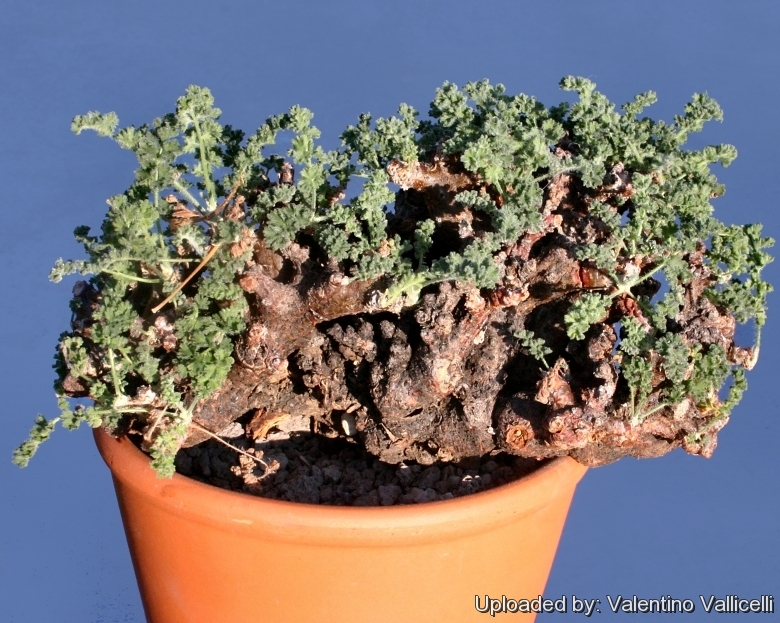
Otidia alternans (Pelargonium alternans) Photo by: Valentino Vallicelli
Suited for bonsai culture.
Origin and Habitat: Pelargonium alternansSN|15282]]SN|15282]] comes from the southern part of South Africa (western and southern parts of south-western Cape Province)
Habitat: This species has a well-developed root system adapted for growing between rocks (scale, quartzite, dolerite, granite and tillite). It grows in the Succulent Karoo with its hot summers and an average annual rainfall of 100–200 mm, mainly in winter and is very drought tolerant. The seeds of pelargoniums have adapted to these environmental conditions by germinating over long periods of time, ensuring that some seeds germinate in favourable conditions. Animals are fond of the leaves and when the area is dry they will eat the stems as well. The populations are stable and occur over a large area.
Synonyms:
See all synonyms of Pelargonium alternans
back
Accepted name in llifle Database:Pelargonium alternans J.C.Wendl.Hort. Herrenhus. 1: 14 1798Synonymy: 7
back
Common Names include:
AFRIKAANS (Afrikaans): blomkoolmalva, koolmalva
Description: Pelargonium alternansSN|15282]]SN|15282]] is a deciduous, succulent or sub-succulent, multi-trunked shrublet with a definite summer dormancy. The whole plant can reach 40-50 centimetres in height, with a 50-60 cm crown of foliage. It is suited for bonsai culture. The white to very light pink flowers appear from late autumn to early summer, and in cultivation it can flower throughout the year, peaking in autumn and early summer. The typical geranium flowers that are 15 mm in diameter have fine pinkish purple lines on the petals and orange stamen.
Derivation of specific name: The species name 'alternans' is Latin for alternating, referring to the alternately arranged leaflets of the leaves.
Stem: Branches short, very compact, erect, succulent to semi-woody, rough, twisted and knotted, grey-green, glaucous or brown, clothed with a brown, smooth, glossy bark. The young shoots are thickly clothed with short densely villous hairs. The stems will grow up to three centimetres in diameter.
Leaves: Small pinnately compound, divided (dissected), hirsute (thickly clothed with long white hairs) with glandular hairs interspersed at the ends of the stems. Lamina oblong, 20-60 mm long, 10-20 mm wide pinnae (leaflets) petiolate generally alternate cuneate 3 lobed or 3 parted the points curled or undulate more or less cut or toothed the teeth with rounded apices. Stipules triangular, 1x1-1.5 mm, initially persistent, finaly deciduous. Petioles slender slightly flattened on the upper side and rounded on the lower thickly clothed with long spreading white hairs of very unequal lengths. The leaves are scented, with the scent varying from clone to clone, varying from apple to soap to various indescribable and unpleasant scent. The oils that give the scent keep most grazing animals from eating the leaves. Mostly leafless in fall when flowers show up.
Inflorescences: Peduncles 1.8-5 mm long, unbranched thickly clothed with unequal spreading hairs with 2 to 4 terminal flowers (pseudoumbels). The inflorescence has smaller foliar leaves and is non persistent.
Flower: White pink with red anthers, night scented. Pedicles very short. Calyx 5 cleft the segments 1.5-2 long 7 mm wide, lanceolate concave acute very hairy and fringed longer than the nectariferous tube spreading or slightly reflexed. Hypanthium 5-9 mm flattened on each side gibbous at the base. Petals 5 nearly equal in size narrowly spatulate white the 2 upper ones narrow at the base reflexed from about the middle with 2 red lines near the centre eared a little above the base Stamens 10 united at the base base the 5 fertile filaments very long and straight pollen orange red. Style very short hairy at the base and smooth upwards. Stigmas 5 purple spreading or reflexed.
Bibliography: Major references and further lectures
1) J. J. A. Van der Walt, P. J. Vorster, Ellaphie Ward-Hilhorst “Pelargoniums of southern Africa” Purnell, 1977
2) Robert Sweet “Geraniaceae: The Natural Order of Gerania, Illustrated by Coloured Figures and Descriptions; Comprising the Numerous and Beautiful Mule-varieties Cultivated in the Gardens of Great Britain, with Directions for Their Treatment”, Volume 3 J. Ridgway, 1826
3) Geraniaceae Group “Geraniaceae Knuth Tribe 1 Geranieae: Superseded genera” Geraniaceae Group, 2005
4) “Botanica: The Illustrated A-Z of Over 10,000 Garden Plants and how to Cultivate Them” Mynah, 1997
5) Robert Stephen Adamson “The Botanical features of the south western Cape Province: essays” Specialty Press of S.A., 1929
6) Hermann Jacobsen “Handbook on Succulent Plants: Ficus to Zygophyllum” Brooklyn Botanical Garden, 1977
7) Barkhuizen, B.P. “Succulents of Southern Africa.” Purnell & Sons Publishers, Cape Town. 1978.
8) Jackson, W.P.U. “Origin and meanings of names of South African plant genera” . UCT, Rondebosch.1990.
9) Van Breda, P.A.B. & Barnard, S.A. “100 Veld plants of the winter rainfall region.” Department of Agricultural Development, Pretoria. 1991.
10) Van der Walt, J.J.A. & Vorster, P.J. “Pelargoniums of Southern Africa” Vol. 2. Juta, Cape Town. 1981.
11) Vlok, J. & Schutte-Vlok, A.L. “Plants of the Klein Karoo”. Umdaus Press, Hatfield. 2010.
12) “Pelargonium alternans” in: Plantzafrica <http://www.plantzafrica.com> Lize Wolfaardt - Karoo Desert National Botanical Garden - July 2014 <http://www.plantzafrica.com/plantnop/pelargoniumalternans.htm> Web. 6 January. 2016
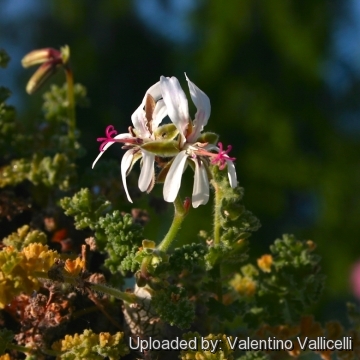 Otidia alternans (Pelargonium alternans) Photo by: Valentino Vallicelli
Otidia alternans (Pelargonium alternans) Photo by: Valentino Vallicelli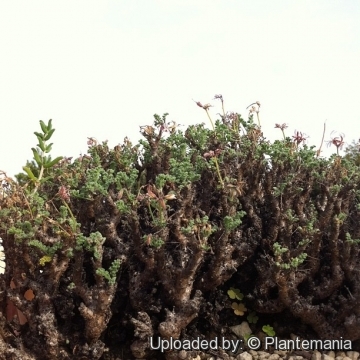 Otidia alternans (Pelargonium alternans) Photo by: © Plantemania
Otidia alternans (Pelargonium alternans) Photo by: © Plantemania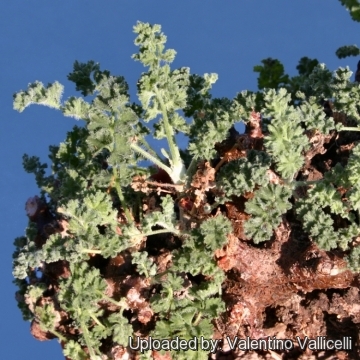 Otidia alternans (Pelargonium alternans) Photo by: Valentino Vallicelli
Otidia alternans (Pelargonium alternans) Photo by: Valentino Vallicelli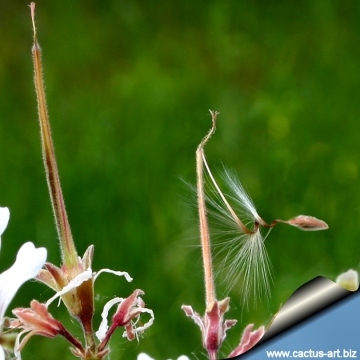 Fruit and a winged seed. (Pelargonium alternans) Photo by: Cactus Art
Fruit and a winged seed. (Pelargonium alternans) Photo by: Cactus Art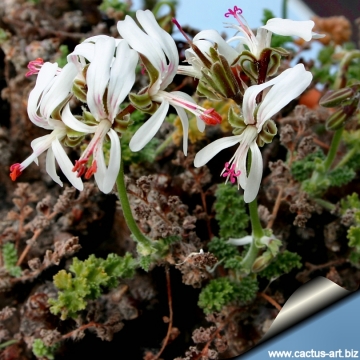 Otidia alternans (Pelargonium alternans) Photo by: Cactus Art
Otidia alternans (Pelargonium alternans) Photo by: Cactus Art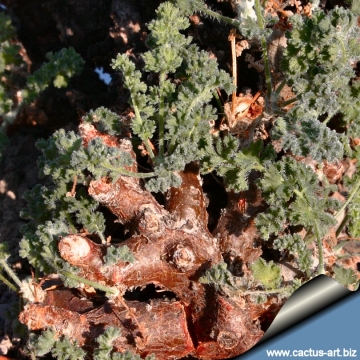 Otidia alternans (Pelargonium alternans) Photo by: Cactus Art
Otidia alternans (Pelargonium alternans) Photo by: Cactus Art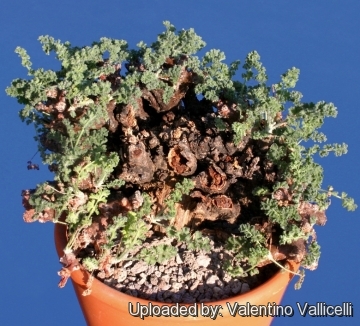 Otidia alternans (Pelargonium alternans) Photo by: Valentino Vallicelli
Otidia alternans (Pelargonium alternans) Photo by: Valentino VallicelliSend a photo of this plant.The gallery now contains thousands of pictures, however it is possible to do even more. We are, of course, seeking photos of species not yet shown in the gallery but not only that, we are also looking for better pictures than those already present.
Read More... Cultivation and Propagation: Pelargonium alternansSN|15282]]SN|15282]] is easily cultivated from seed or leaf cuttings.In summer rainfall areas it will do fine if planted in sandy soil, but the plant will not go dormant.
Soil: It does best with a mix that has almost no organic material at all. Perlite can be substituted for pumice, but it tends to rise to the surface of the mixture.
Waterings: Water in autumn, then in spring, at a minimum temperature of +14° C. Keep completely dry in summer and winter, at a minimum temperature of +8° C. Pelargonium alternansSN|15282]]SN|15282]] is a drought-resistant plant and do not need much water and will quickly respond to a small amount of water.
Fertilization. Pelargonium alternansSN|15282]]SN|15282]] in cultivation is usually so overwatered and overfertilized that it is hardly recognizable as the species that it is. Correctly grown, this is a beautiful, compact and dense plant.
Exposure: Light shade or morning sun in summer.
Hardiness: Protect from frost.
Reproduction: There are two main ways to propagate members of the genus Pelargonium. Plant seeds any time of the year, but a spring or autumn sowing of seeds is usually most successful. Rooting cuttings of stems is another method. Sow the seeds in sandy soil mixture and cover the seeds with 3 mm of sand. Germination usually takes place within 6–8 days, but can be very erratic, and can take place over a long period of time. There is a way of overcoming the long time periods and the inhibitors; that is, by scarifying the seeds. Keep the soil moist, but care must be taken not to overwater. When the seedlings are about 30 mm high they can be transplanted. The best time to take the cuttings is in autumn or spring. Take 50 mm cuttings from new growth, place in sandy soil and keep moist.

















